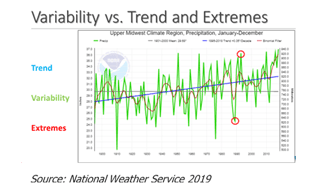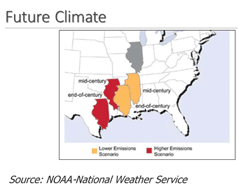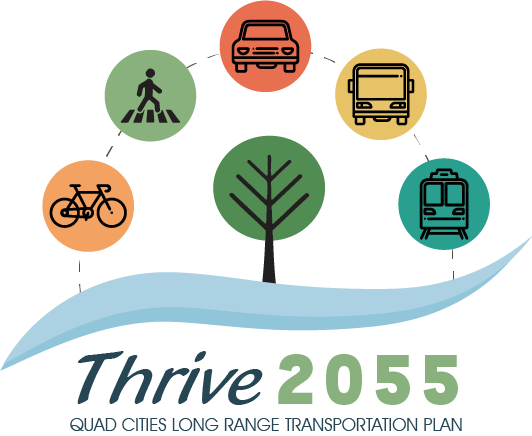June 26, 2019 – Ray Wolf, Science and Operations Officer with the National Weather Service (NWS), under the parent agency National Oceanic and Atmospheric Administration (NOAA), provided an overview on weather and climate resilience. With a mission of a “Weather-Ready Nation,” the NWS provides weather, water, and climate forecasts and warnings for the protection of life and property, and for the enhancement of the national economy. Hazards planning and preparedness is core to this mission.
 Climate vs. Weather. Climate is what you expect while weather is what you get. Weather records demonstrate variability and extremes, while climate is a trend over time. He illustrated this with a graph on annual precipitation for the upper Midwest with the precipitation trend increasing between 1900 and 2010 from 28 inches to 32 inches annually. This change represents an increase of 1/3 per inch over a decade, and has contributed to a 28% increase in flow of the Mississippi River. Understanding that climate change is occurring and the science behind these trends is critical for planning and preparedness as part of community resilience strategies.
Climate vs. Weather. Climate is what you expect while weather is what you get. Weather records demonstrate variability and extremes, while climate is a trend over time. He illustrated this with a graph on annual precipitation for the upper Midwest with the precipitation trend increasing between 1900 and 2010 from 28 inches to 32 inches annually. This change represents an increase of 1/3 per inch over a decade, and has contributed to a 28% increase in flow of the Mississippi River. Understanding that climate change is occurring and the science behind these trends is critical for planning and preparedness as part of community resilience strategies.
Disasters’ Impacts. In 2018 alone, there were 14 separate billion-dollar weather and climate disasters in the United States. Between 1980 and 2019, the average trend has escalated from less than one to more than six per year on average. In 2011, there were 16 disasters. Resilience has significant economic importance as well as social component of affected citizens. Urban areas with their redundant facilities tend to be more resilient than rural areas where there are fewer roads and resources. As well-demonstrated this past winter and spring, winter storms interrupted travel, and resulted in higher costs for snow removal. Increased frequency of freeze-thaw cycles affecting road surfaces are evidenced by potholes and poor pavement conditions. Record flooding affected bridges and culverts and closed roads. Mr. Wolf noted that Bi-State staff are working on a metropolitan extreme weather transportation resilience pilot that will help bring attention to these issues.
 Future Climate and Strategies. Our future climate is predicted to be similar to the climate of our most southern states using lower emission and higher emission scenarios. The illustration below highlights this probability for mid-century to end-of-century forecasts for the State of Illinois. As an example of best practices, the NWS office in Davenport is powered by 40% renewable energy. Other national and local air emission reduction efforts will help to contribute to the slowing of climate trends. For more information on climate, refer to U.S. Global Change Research Program – National Climate Assessment at www.climate.gov.
Future Climate and Strategies. Our future climate is predicted to be similar to the climate of our most southern states using lower emission and higher emission scenarios. The illustration below highlights this probability for mid-century to end-of-century forecasts for the State of Illinois. As an example of best practices, the NWS office in Davenport is powered by 40% renewable energy. Other national and local air emission reduction efforts will help to contribute to the slowing of climate trends. For more information on climate, refer to U.S. Global Change Research Program – National Climate Assessment at www.climate.gov.


